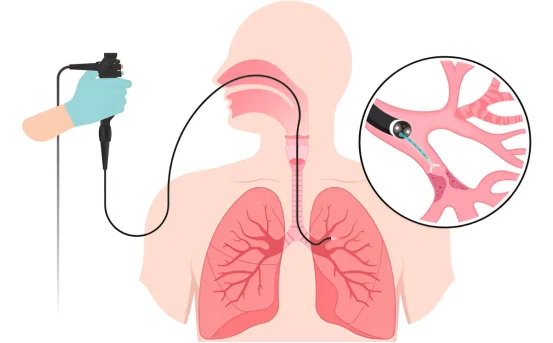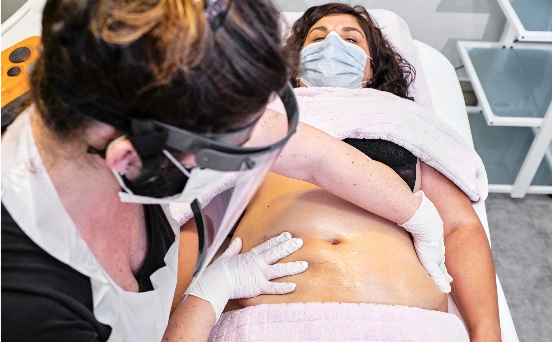Bronchoscopy is a procedure that lets doctors take a close look at the lungs and airways with very little disruption to the body. They do this by threading a tool known as a bronchoscope – a slender, flexible tube – down through the nose or mouth and into the bronchial passages. Because the bronchoscope is lighted and equipped with a tiny camera, specialists can see clear images of hard-to-reach areas inside the chest. Understanding what is bronchoscopy surgery can help patients grasp the importance of this diagnostic tool.
What is Bronchoscopy Surgery
Physicians rely on bronchoscopy for a variety of tasks ranging from diagnosis to treatment. It can help pinpoint the source of a persistent cough, extract a lodged piece of food or hardware, or gather small tissue samples for biopsy. The procedure is also useful for managing conditions like tumours or stubborn blockages by delivering targeted therapies right where they are needed. Altogether, bronchoscopy has become an invaluable part of modern pulmonary care, letting clinicians operate inside the lungs without the need for major surgery.
Bronchoscopy is performed for several key reasons, blending both diagnosis and treatment in a single procedure. Here’s a closer look at when a doctor might recommend it.
- First and foremost :- bronchoscopy is a valuable tool for diagnosing lung problems. If a patient has been plagued by a persistent cough, ongoing breathlessness, blood-streaked phlegm, or puzzling findings on a chest X-ray, bronchoscopy can often shed light on the issue. Through the tiny camera passed into the airways, physicians can identify lung infections—such as tuberculosis or pneumonia—along with interstitial lung diseases, more progressive conditions like pulmonary fibrosis, and even complications tied to chronic obstructive pulmonary disease.
- Second :- the procedure allows for lung biopsies. While looking directly at the airways, a doctor can collect small samples of lung tissue for laboratory analysis. This is particularly useful for investigating suspicious nodules or masses seen in CT scans, helping to confirm or rule out cancers, infections, or autoimmune concerns.
- Last :- bronchoscopy provides a minimally invasive way to clear the airways. Whether a patient has a tumor, a stubborn mucus plug, or an accidentally inhaled object, the bronchoscope can be equipped with tools to safely remove the obstruction and restore normal breathing. Overall, bronchoscopy combines diagnosis and rescue in a single session, often avoiding the need for more extensive surgery.
Bronchoscopy isn’t only a way to look inside the lungs—it can actually fix problems while the doctor is already there. With this technique a physician can slide in a stent to prop open a stubborn airway, scoop away a tumor or polyp, drain a pocket of infected fluid, or even use lasers and electric heat to shrink lesions safely. There are two main versions of the procedure. Flexible bronchoscopy, by far the more frequently performed, uses a thin, bendy tube that can be threaded through the nose or mouth. Because it is narrow, it can be used for routine exams, quick biopsies, and suctioning out thick secretions or blood. Rigid bronchoscopy, in contrast, looks like a small metal chimney pipe. Doctors usually reserve this sturdier version for emergencies—such as when a child accidentally inhales a coin—or for cases where they need larger tools to remove a big foreign body or mass. In the hours before surgery patients are asked to stop eating and drinking for six to twelve hours so the stomach is empty. At the clinic staff spray the back of the throat with numbing medicine and give either mild sedation or general anesthesia. Once the patient is ready, the doctor gently inserts the bronchoscope through the mouth or nose, guides it down the trachea into the branching airways, and watches the whole scene on a monitor. Small channels built into the scope let him pass instruments to grab tissue, vacuum debris, or apply treatment, easy to do without making extra cuts. From start to finish the procedure typically takes thirty to sixty minutes.
Advantages of Bronchoscopy
Bronchoscopy is a keyhole procedure, so no big cuts need to be made on the chest. Because of this, most patients notice a much shorter stay in hospital. Many walk out the same day they have the test. Another strength of the bronchoscope lies in its camera, which gives doctors a clear view of the airways. This means they can identify serious lung problems while they are still small and easier to treat. In the middle of the exam, the doctor can also take samples or remove a blockage right then and there. When the procedure is done by a well-trained lung specialist, the overall safety record is excellent.
Possible Risks and Complications
Although complications are uncommon, they can happen. A sore throat or temporary hoarseness is the most usual complaint and goes away quickly. If a tissue sample is taken, some minor bleeding may appear, but it usually stops on its own. There is a small chance of a lung infection developing later, especially in people with pre-existing conditions. Occasionally, the muscle lining the airways tighten up (bronchospasm), but that is easily managed. The rarest concern is a pneumothorax, or air leak into the chest cavity, which may need further treatment. Because any of these events can be influenced by other medical issues, patients should be open with their doctor about heart problems, diabetes, or blood-thinning medicines.
Care and Recovery After the Procedure
Once you leave the recovery area, the health team will keep a watchful eye on heart rate and oxygen levels for an hour or two. Until the numbing spray in your throat wears off, you will not be allowed to eat or drink, to prevent choking. A dry cough and mild throat discomfort may linger, but both should ease within one or two days. Plenty of rest and good hydration are the best remedies. Should you start feeling increasing shortness of breath, sharp chest pain, or a high fever, these may signal a concern, so it is important to call the clinic right away.
Who Might Need a Bronchoscopy?
A doctor may recommend this procedure if you have a cough that won’t go away or if you’ve developed wheezing for no clear reason. It can also be warranted when a chest X-ray or CT scan reveals unusual spots that need further investigation. In cases where lung cancer is a possibility, bronchoscopy can help confirm the diagnosis. It is equally useful for clearing blocked airways or for understanding lung infections and episodes of bleeding in the respiratory tract.
Conclusion
Bronchoscopy is more than just a diagnostic tool; it combines the ability to look inside the lungs with the option to treat various problems on the spot. By allowing doctors to investigate, biopsy, and, when necessary, remove tissue or mucus, the procedure fits squarely into today’s approach to respiratory medicine. Its role in spotting serious diseases early has saved countless lives and helped many patients breathe easier.
If you’ve been told that you might need this test, take the time to speak with a pulmonologist who can walk you through what to expect. Getting thorough answers before the procedure can ease anxiety and ensure you are on the path to a quicker, clearer diagnosis and, ultimately, a better quality of life.























